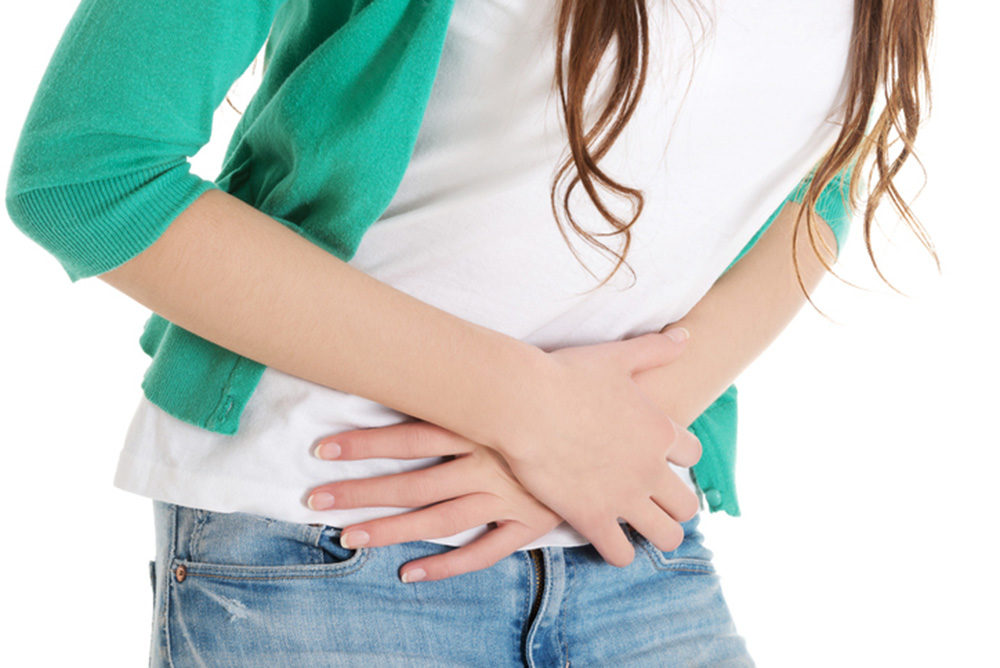
iStock
THE BACTERIA H. pylori “lives in half of the world’s people,” according to New York Times food reporter Priya Krishna, who has “never known what it means to have a normal digestion.”After a childhood diagnosis of acid reflux, Krishna spent years taking antacid tablets that didn’t help —followed by testing for food allergies that turned up nothing. Krishna writes that, now that she’s dining out a few times a week for work, afterwards, “more often, I’ll be pinned to the couch for hours with a stomachache.”
Heliobacter pylori made a big splash in 1984 when Australian gastroenterologist Barry Marshall consumed a petri dish full of the bacteria in an effort to prove they were the cause of stomach ulcers. After three days, Marshall experienced abdominal symptoms; after eight, he developed severe gastritis confirmed by GI testing. In 2005, Marshall and colleague, J. Robin Warren, won the Nobel Prize in Physiology or Medicine for their discovery that H. pylori caused peptic ulcers.
Until then, doctors had blamed lifestyle choices—stress and diet—for dyspepsia (indigestion) and peptic ulcers, sores in the upper digestive tract. The best recourse for sufferers was to avoid spicy and acidic foods, and alcohol– restrictions that kept stomach ulcers in the news, especially around food-focused holidays like Thanksgiving.
Once H. pylori became the clear culprit—with most gastritis remedied using easily available treatments that ranged from antacids and proton pump inhibitor drugs (PPIs) to antibiotics—reports of stomach acid and peptic ulcers died down. Writes Times reporter Krishna, “H. pylori isn’t getting the same public attention as irritable bowel syndrome, the gut issue currently making the rounds of Tik Tok among users who identify as ‘hot girls with I.B.S.’”
In the current pandemic, however, people infected with H. pylori appear more susceptible to SARS-CoV-2 infection as well as more likely to have severe Covid symptoms. Based on Chilean research, H. pylori in the gastric mucosa can increase expression of the specific receptors that allow the virus entry into cells— and can cause inflammation similar to that seen with diseases such as diabetes that elevate the risk for severe Covid.
Most of the 30-40% of people in the U.S. whose guts harbor H. pylori contracted the infection during childhood, and most have no symptoms. The most common signs of H. pylori are stomach pain and sensations of burning that can last from a few minutes to several hours and can travel away from the center of the stomach. Other symptoms are bloating and feelings of fullness, belching, heartburn, unexplained weight loss and chest pain. One distinctive symptom is hunger or an empty feeling in the stomach one to several hours after eating.
H. pylori is responsible for most peptic ulcers—both gastric, in the stomach, and duodenal— as well as for most cases of chronic gastritis, an inflammation of the stomach lining. But gastritis can have other causes, most commonly the use of nonsteroidal anti-inflammatory drugs (NSAIDs), but also the autoimmune inflammatory bowel disease (IBD) and viral infections, such as cytomegalovirus.
While symptoms of gastritis may be mild or intermittent, the main worry for sufferers is the risk that chronic inflammation can be an “important initiating and promoting step of gastric cancer,” according to the Chilean researchers. Stomach cancer is the second leading cause of cancer-related deaths worldwide, and its prevalence may be increasing. Among individuals infected with H. pylori, “approximately 10% develop peptic ulcer disease [and] 1 to 3% develop gastric adenocarcinoma, according to Vanderbilt University gastroenterologist Lydia Wroblewski and colleagues.
Because of the cancer risk, upper endoscopy— placing a tube through the mouth into the digestive tract to allow direct observation of the mucosa and collection of a biopsy sample—is the “gold standard investigation for confirmation of H. pylori” for individuals over 60 years old, for those using NSAIDs and for anyone with “alarm symptoms.” These can include a family history of upper GI malignancy, feelings of fullness, iron-deficiency anemia, unexplained weight loss, recurrent vomiting, difficulty swallowing and GI bleeding.
For younger patients who have stomach pain that suggests peptic ulcer disease (PUD) lasting longer than one month, less invasive testing and treatment can counter the risk of recurring inflammation and symptoms. In addition to serum and stool testing, there’s the urea breath test, which involves swallowing a liquid that contains urea; in the exhalation, the presence of H. pylori converts urea into carbon dioxide. Because the breath test can be expensive and people worry about radioactivity in the solution, however, few emergency departments or doctors’ offices have the ability to perform the test.
Once H. pylori colonizes the gastric environment, “it persists for the lifetime of the host,” writes Wroblewski, “suggesting that the host immune response is ineffective in clearing this bacterium” without treatment. The first “standard outpatient therapy” is the so-called empiric PPI trial— using proton pump inhibitor drugs to reduce inflammation and counter symptoms, which can obviate the need for testing. Following detection of H.pylori, though, only antibiotics can produce a complete cure.
“Treatment for H. pylori infection is challenging,” Mass General primary care physician Wynne Armand writes in a HarvardHealth blog. “The cure rate depends on picking the right combination of…three or four medications [taken] multiple times a day for 14 days.” The choice of antibiotics varies according to antibiotic resistance in the patient’s region as well as which antibiotics they have taken in the past—with the likelihood that their H. pylori has become resistant to these.
I have occasional indigestion and GERD, as do many of my acquaintances—though our symptoms sound less debilitating than those of Times food writer Krishna. Most of us do not eat complicated restaurant food on a regular basis. Still, I am curious whether the easier, more accessible testing methods currently under development will one day become part of annual physical exams for many more people like us.
—Mary Carpenter regularly reports on need-to-know topics in health and medicine.
